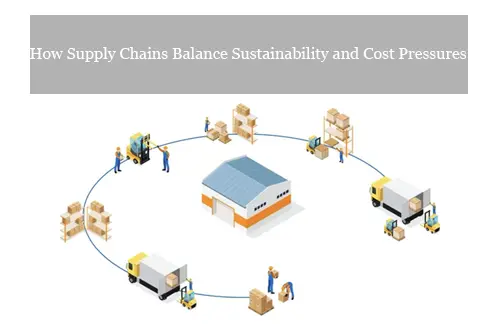How Supply Chains Balance Sustainability and Cost Pressures
A recent survey involving more than 2,300 global supply chain respondents revealed that economic and social pressures are creating dynamic challenges for supply chain sustainability efforts. Increasing pressure from outside investors on companies to build sustainable supply chains has forced many companies to scale back projects. However, commitment to supply chain sustainability sometimes seems to flourish when supply networks are unexpectedly disrupted.
But in fact, concerns about an economic contraction in 2023 are a more pernicious form of supply chain disruption, and commitment to supply chain sustainability appears to wane when overall economic health appears to be at risk. So, facing this challenge, how should companies balance sustainable development and cost pressure? Next, we explore ways for supply chains to balance sustainability with cost pressures.
In the evolving global business landscape, the symbiotic relationship between sustainability and cost pressures has become a focus of discussion. As outside investors intensify their focus on companies building sustainable supply chains, a delicate balance must be struck between environmental and economic considerations.

In an era when corporate responsibility is under intense scrutiny, commitment to supply chain sustainability often reaches its peak during unexpected disruptions. It is during these crises that businesses recognize the fragility of traditional supply chains and the need to strengthen them against environmental and social challenges.
Yet the tug-of-war between economic health and sustainability commitments is clear. With concerns of an economic contraction in 2023 coming, attention is turning to prioritizing immediate financial concerns. Fear of recession often overshadows the long-term benefits associated with sustainable practices.
Businesses need to take a long-term view of sustainability and recognize that short-term economic pressures may create obstacles. Investments in sustainable practices may come with initial costs, but can create resiliency and cost savings in the long term.
Sustainable development is not only a moral requirement; This is a strategic move to build resilience. Companies with strong sustainable supply chains are better able to withstand disruptions, gaining a competitive advantage in increasingly volatile markets.
Innovations that embrace sustainable practices not only align with environmental goals but also help improve cost efficiencies. Technology and processes that reduce waste, energy consumption and environmental impact can provide economic advantages in the long term.
How supply chains balance sustainability and cost pressures:
Build a sustainable supply chain
External investors are putting increasing pressure on companies to build sustainable supply chains. To meet this demand, companies need to assess the social and environmental impacts of their supply chains and take steps to reduce these impacts. For example, companies can work with suppliers to implement environmentally friendly practices and social responsibility standards to ensure the sustainability of their supply chains.
Optimize supply chain management
Optimizing supply chain management can reduce costs and increase efficiency. Companies can analyze various links in the supply chain to find areas for improvement, such as reducing inventory, optimizing transportation and warehousing management, etc. At the same time, enterprises can also adopt modern supply chain management technologies, such as the Internet of Things, big data and artificial intelligence, to improve the visibility and prediction capabilities of the supply chain.
Build a resilient supply chain
Building resilient supply chains can address the challenges of unexpected disruptions. Companies can take steps to enhance supply chain resilience, such as diversifying suppliers and establishing backup supply chains. Additionally, companies can adopt advanced supply chain analytics tools to better predict and manage potential supply chain risks.
Balancing economic and social responsibilities
In the face of economic pressure, companies need to balance economic and social responsibilities. While reducing project size may reduce costs, it may also have a negative impact on the sustainability of the business. Therefore, companies need to consider their social and environmental impacts when downsizing projects and take steps to reduce negative impacts.
Strengthen supply chain cooperation
Strengthening supply chain cooperation can help companies better cope with challenges. Businesses can build close partnerships with suppliers, logistics providers and other stakeholders to jointly address issues and challenges in the supply chain. By strengthening cooperation, companies can better coordinate various links in the supply chain and achieve more efficient operations and management.
As external pressure on companies to create sustainable supply chains increases, the delicate balance between economic needs and environmental management becomes paramount. Achieving this balance requires a strategic approach and a commitment to long-term sustainability to weather the ebbs and flows of economic uncertainty. Companies that successfully coordinate these elements are not only able to meet immediate challenges but also become leaders of the future, where sustainable practices are integral to corporate responsibility and financial success.










